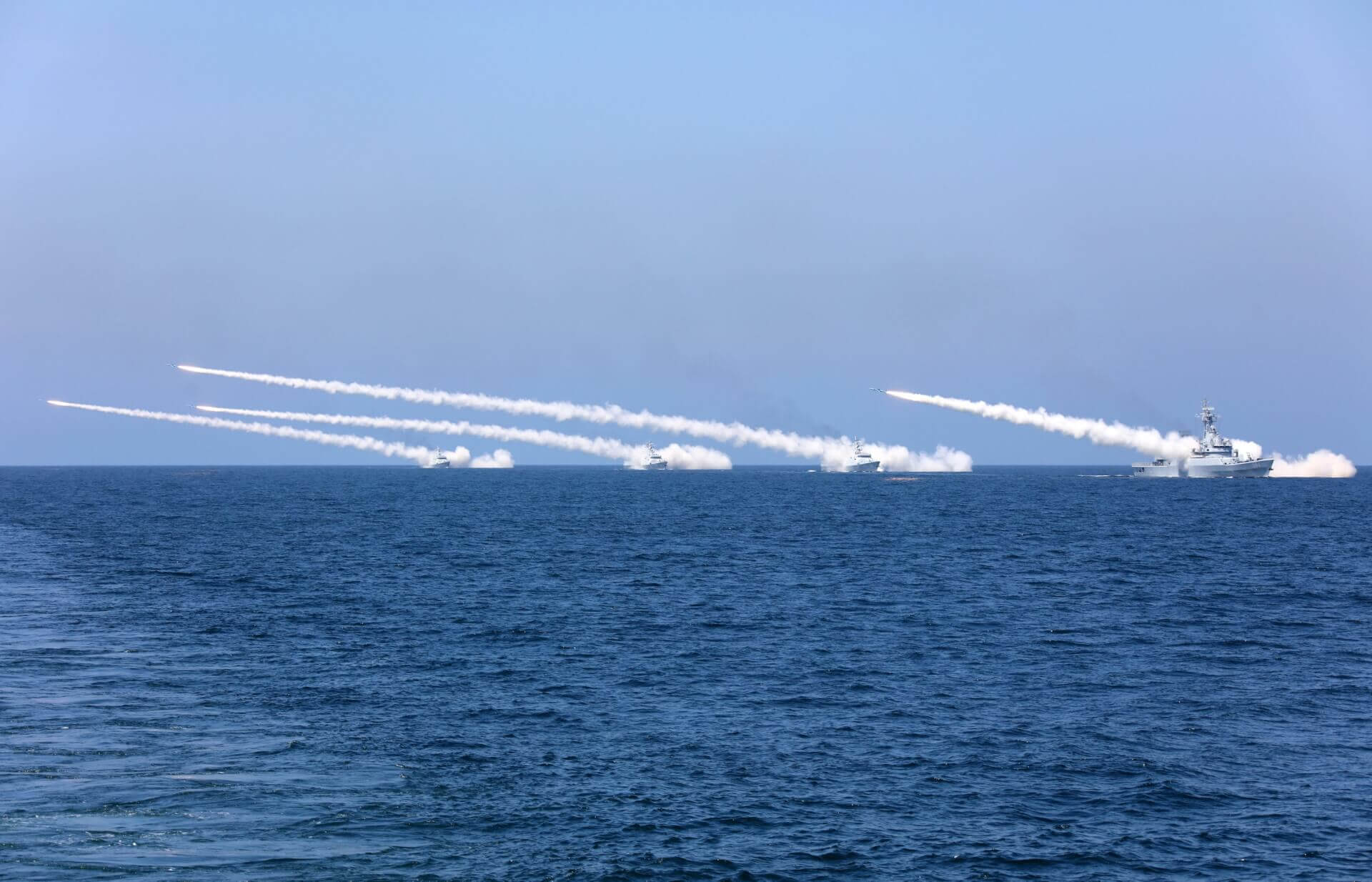China on Monday began five military drills along different parts of its coast: two near the Paracel Islands in the South China Sea (SCS), one in the East China Sea, one in the Bohai Sea, and one in the Yellow Sea. The Maritime Safety Administration announced the exercises for the week on its website and said that all ships would be prohibited from entering the seas, but did not provide any additional details.
China conducts such drills regularly to train a combat-ready military force, but it’s rare that multiple exercises take place simultaneously. Though there has been no indication that they were a result of rising tensions in the Indo-Pacific, the exercises do follow a series of aerial military drills organized by the Chinese People’s Liberation Army (PLA) in the Taiwan Strait 10 days ago, which saw more than 40 warplanes enter Taiwanese airspace. At the time, Chinese mainland analysts described the PLA as being capable of “seizing air superiority and command of the sea over the island of Taiwan and in the Straits”, while authorities in Beijing reiterated its claims over the self-governed island.
Four of the five exercises that started on Monday were also conducted last month, which Chinese military experts called a rare arrangement of drills. In response, the United States sent spy planes into a no-fly zone during a Chinese naval live-fire drill. This prompted Beijing to lodge a formal protest with Washington, arguing that the US’ actions not only “seriously interfered” with the normal exercise activities, but also “seriously violated” the safety code for air and sea between the two nations under international norms.
Beijing’s aggression in the region – especially in the SCS – has fuelled security concerns in the international community, given that the parts of the waters are hotly contested by multiple nations including China, Vietnam, the Philippines, Taiwan, Malaysia, and Indonesia. The US State Department on Sunday said that China has “pursued a reckless and provocative militarization” of the disputed outposts in the Spratly Islands, arguing that Beijing had gone back on its previous commitment to not do so. In response, the Chinese foreign ministry argued that China’s actions in the Spratlys were in line with international law and that it was the US who was the “biggest threat” to peace and stability in the SCS.
China Conducts Simultaneous Military Drills in Four Neighbouring Seas
China conducts such drills regularly to train a combat-ready military force, but it’s rare that multiple exercises take place simultaneously.
September 29, 2020

Chinese naval warships fire missiles during exercises in the Bohai Sea and the Yellow Sea, off China's east coast in 2017. SOURCE: SOUTH CHINA MORNING POST/REUTERS
